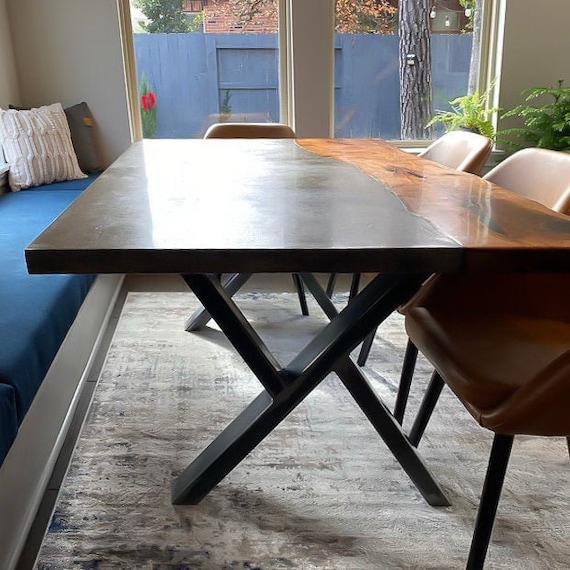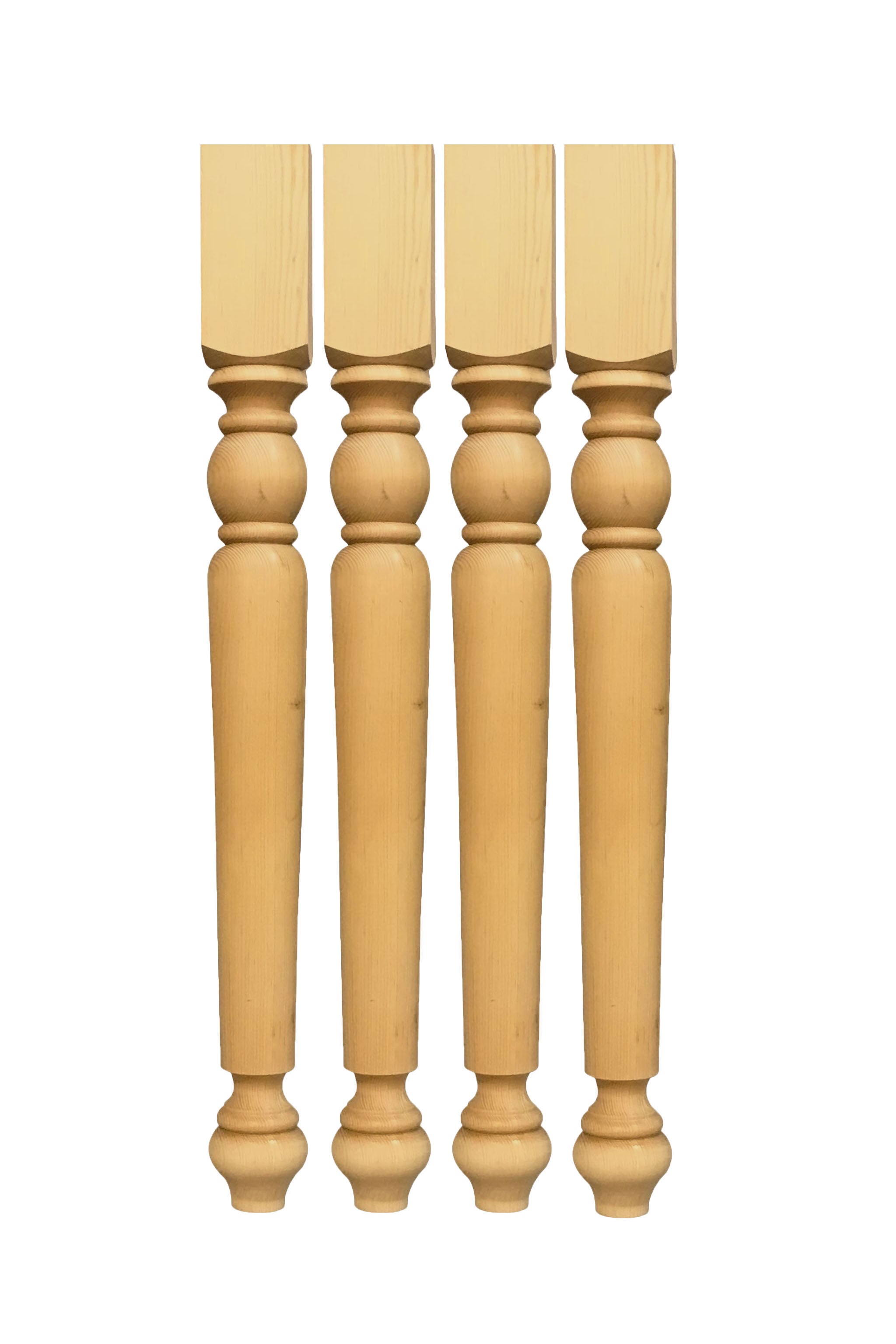Key Aspects to Maintain in Mind for Table Legs Timber Choices
When selecting timber for dining table legs, numerous essential elements necessitate careful consideration to ensure both performance and visual allure. The selection of timber type, characterized by its resilience and special grain patterns, plays a critical duty in the overall design and long life of the piece. Additionally, one need to ponder upkeep needs and the environmental ramifications of sourcing materials. As these components intertwine, they considerably influence the final outcome of your eating table. Understanding the nuances of each factor can be intricate, leading to vital decisions that warrant further exploration.
Timber Types and Attributes
When choosing timber for dining table legs, it is necessary to understand the distinct attributes of numerous wood types. Various woods supply distinct benefits and negative aspects, affecting both the durability and visual appeal of the ended up item.
Oak, understood for its excellent resilience, additionally features a noticeable grain that can include personality to the table. Cherry timber, with its rich color that grows over time, offers a luxurious appearance yet might call for more maintenance to protect against scrapes.
On the other hand, softwoods like pine and fir are extra inexpensive and much easier to collaborate with, yet they are less sturdy than woods. Pine is light-weight and includes a cozy, rustic appearance, making it a popular selection for laid-back dining settings. It is a lot more vulnerable to scrapes and dents.
Comprehending these qualities will help in making an educated decision to make certain the legs of the table fulfill both useful and aesthetic needs.
Grain Patterns and Aesthetics
Picking the ideal grain pattern can dramatically improve the aesthetic allure of table legs. The timber's grain is not simply an aesthetic attribute; it imparts a special character and beauty to each piece. Various wood species show distinctive grain patterns, varying from the straight lines of maple to the elaborate swirls of oak and the striking number of walnut. These patterns can evoke numerous designs, from rustic to contemporary, making it essential to pick a grain that straightens with the overall design of the dining room.
Moreover, the positioning and range of the grain can affect the viewed dimension and beauty of the table. For example, larger, a lot more obvious grains may offer a vibrant, remarkable effect, while finer, subtler grains can create an improved, downplayed look. Additionally, the completing process can even more enhance these patterns, emphasizing the all-natural beauty of the wood and drawing out rich hues.
Ultimately, the selection of grain pattern ought to balance with other layout aspects, such as the tabletop and surrounding furniture, making certain a cohesive visual that elevates the eating experience. Thoughtful choice of wood grain not only contributes to the table's beauty however also shows the owner's preference and style.
Longevity and Strength
The longevity and stamina of eating table legs are extremely important considerations for ensuring long life and security in any type of dining area. Selecting the best wood is crucial, as different varieties show varying levels of strength.

Inevitably, purchasing top notch timber and durable construction approaches will certainly yield an eating table that stands the examination of time, while supplying a dependable foundation for numerous dishes shared among friends and family. Prioritizing toughness and strength makes sure that your table remains functional and aesthetically pleasing for several years to find.
Upkeep and Treatment
Appropriate upkeep and treatment are essential for preserving the sturdiness and strength of eating table legs made from wood. Regular cleansing is necessary; utilizing a soft, wet cloth makes sure that dust and particles do not build up, which can bring about scrapes and dullness. It is advisable to avoid harsh chemicals or abrasive products that could damage the coating.
Furthermore, using a suitable timber polish or wax periodically can assist keep the luster and protect the timber from wetness and spills. However, it is essential to adhere to the maker's referrals pertaining to the kind of item to utilize, as particular coatings might react negatively to specific chemicals.
Humidity and temperature variations can also influence wood table legs, creating them to warp or fracture. It's best to position the table away from straight sunshine and warm sources. Dealing with these quickly can stop further damages. if the table legs have any type of scrapes or damages.
Lastly, occasionally inspecting the joints and screws for rigidity is essential to maintain architectural integrity (Dining Table Legs Wood). By sticking to these maintenance techniques, house owners can guarantee their wooden table legs continue to be attractive and useful for many years ahead
Ecological Considerations
When selecting wood for eating table legs, it's important to take environmental factors to consider into account. The sourcing and sustainability of wood are extremely important in reducing ecological influence. Selecting wood from qualified resources, such as those endorsed by the Forest Stewardship Council (FSC), makes sure that the hardwood is collected properly, promoting woodland conservation and biodiversity.

Additionally, neighborhood sourcing of timber decreases transportation emissions, sustaining regional economic climates while reducing ecological effect. It is additionally suggested to be familiar with the wood's therapy and ending up processes, as certain chemicals can be damaging to both human health and wellness and the atmosphere. look at this site By prioritizing lasting wood options, customers can contribute to ecological conservation while taking pleasure in the toughness and elegance of their dining table legs.
Verdict
In final thought, selecting wood for eating table legs requires mindful consideration of numerous variables, consisting of wood types, grain patterns, and longevity. Upkeep demands and environmental sustainability additional impact wood selections, highlighting the importance of sourcing from certified or redeemed products.
When picking wood for dining table legs, a number of vital factors call for cautious factor to consider to ensure both capability and aesthetic charm.Correct upkeep and care are important for maintaining the toughness and stamina of dining table legs made from timber.When picking wood for eating table legs, it's essential to take environmental considerations into account. By focusing on lasting useful reference wood selections, consumers can add to environmental preservation while enjoying the sturdiness and beauty of their dining table legs.
In verdict, selecting timber for dining table legs requires cautious factor to consider of different aspects, including wood types, grain patterns, and longevity. Dining Table Legs Wood.